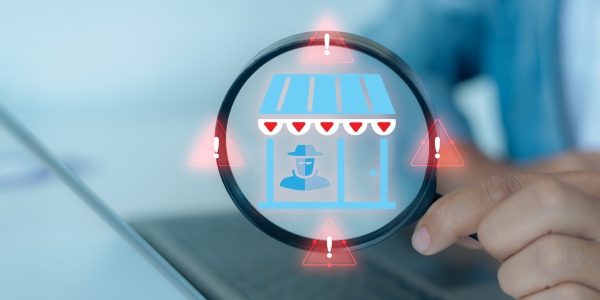Fake Websites Are on the Rise, Ready to Fool Online Shoppers
Fake Amazon and eBay sites are surging ahead of Black Friday, according to a Consumer Affairs report published Nov. 20. New data shows fake Amazon websites increased by 232% in October compared to September. Across all shopping sites, fake stores rose 250%, and fake eBay pages jumped 525% during the same period.
AI Makes Cloning Websites Easier for Scammers
AI-generated misinformation and disinformation have been ranked the #1 global risk for the next two years by the World Economic Forum. The Better Business Bureau (BBB) and cybersecurity experts say AI is lowering the barrier for scammers, who can now clone websites in minutes without coding skills.
Common AI-generated Scams
- Phishing and fake websites: Scammers use AI to create very convincing web pages and emails with polished language, realistic product photos, and even AI-powered chatbots designed to lure you into clicking malicious links or sharing personal data.
- Voice cloning: Scammers can now clone voices with just a short audio clip. With a convincing imitation of a family member or authority figure, they may pressure victims into sending money via wire transfer, gift cards, or cryptocurrency.
- Impersonation schemes: AI makes it easy to create fake customer service portals, bogus investment platforms, or look-alike corporate communications—making scams feel credible.
How to Spot a Fake Website
- Scrutinize the domain name. Scammers often register sites that look almost identical to legitimate ones—with swapped letters, extra characters, or subtle misspellings. If the domain looks “off,” close the tab immediately.
- Watch out for misleading subdomains. Criminals may hope you mistake a subdomain for the real site—for example, netflix.com.movies.com. Remember: the real domain is the last part before the “.com” (in this case, movies.com).
- Be wary of links in emails. Phishing emails frequently use urgent language and convincing branding. Always hover over links—if the URL doesn’t match the text, looks suspiciously long, or is shortened so you can’t tell where it leads, don’t click.
- Evaluate the site’s design quality. Poor visuals, clunky layouts, awkward formatting, or mismatched branding can signal a fake website. If it doesn’t look like something a reputable organization would publish, trust your gut.
- Review contact details and store policies. Legitimate retailers list a physical address and working phone number. Vague or missing shipping and return policies are major red flags. If a policy section looks copied, paste a snippet into your search engine—you may find it reused across scam sites.
- Search for reviews and scam alerts. Before buying, search the website’s name plus “reviews” or “scam.” Fraud victims often post warnings online. When reading reviews, watch for generic or robotic language—fake reviewers often reuse short, low-effort phrases across multiple sites.
As online scams grow more sophisticated—especially with the help of AI—staying vigilant is your best defense. A few seconds spent double-checking a website, link, or email can prevent costly mistakes and protect your personal information. This holiday season and beyond, make it a habit to slow down and verify before you buy.
Check out these articles on our blog for related content.
Reduce Risks With Managed Phishing Tests
Your workforce must be well-prepared to recognize and respond to phishing attempts year-round. PrivaPlan can help your organization identify gaps in phishing knowledge with simulated phishing testing and targeted training.




